From backyard courts to packed stadiums, every American tennis player knows the magic of the right racquet. This guide takes you through the top 10 racquet brands, from Wilson and Babolat’s pro-approved power and spin to Yonex and Head’s precision and comfort. Imagine swinging a Volkl or Solinco frame engineered for stability, or discovering Tecnifibre’s European-crafted control. Even beginners can join the story with Dunlop, Prince, and Senton, offering forgiving, lightweight options to build confidence and skill. Each racquet is crafted with modern materials, oversized sweet spots, and arm-friendly technology, ensuring performance meets playability. Whether hunting for the next pro-level upgrade or a first-time racquet, this guide shows where to shop—Amazon, Walmart, and Dick’s Sporting Goods—so every swing feels like your best one yet.
Key Specification of Tennies Racquet
The racquets across these brands are designed to cater to a wide range of players, from beginners to professionals, combining modern materials like high-modulus graphite, carbon fiber, and advanced composites to ensure durability, stability, and responsiveness. They offer varying head sizes and string patterns, with some emphasizing oversized sweet spots for forgiveness and easier power generation, while others focus on tighter patterns for precision and control. Comfort and arm protection are prioritized through vibration-dampening technologies, foam-filled frames, and specialized construction to reduce fatigue during extended play. Performance features include optimized spin potential, balanced power, and torsional stability, with racquets engineered for different playing styles—power-hitters, topspin specialists, all-court players, and beginners seeking manageable, lightweight frames. Price points range from entry-level affordability to premium models, reflecting the materials, technologies, and target skill level, ensuring that players of all abilities can find racquets suited to their needs while maintaining high build quality and playability.
1. Wilson – Where Legends Perfect Their Game
When it comes to tennis in America, Wilson is more than just a racquet brand—it’s part of the game’s very history. Founded in Chicago in 1914, Wilson has evolved from producing general sporting goods into a household name on courts nationwide. Generations of players, from weekend club hitters to champions like Roger Federer and Serena Williams, have trusted Wilson for its performance-driven designs. The brand’s legacy includes iconic innovations such as the groundbreaking steel T2000 racquet of the 1960s and a tradition of pushing boundaries ever since. Today, Wilson dominates the U.S. market, supplying racquets to countless recreational athletes and more than 40% of the top WTA professionals. What makes Wilson so appealing is its ability to cater to every skill level—whether it’s a junior holding their first racquet, a college competitor perfecting their strokes, or a seasoned player searching for precision and power.
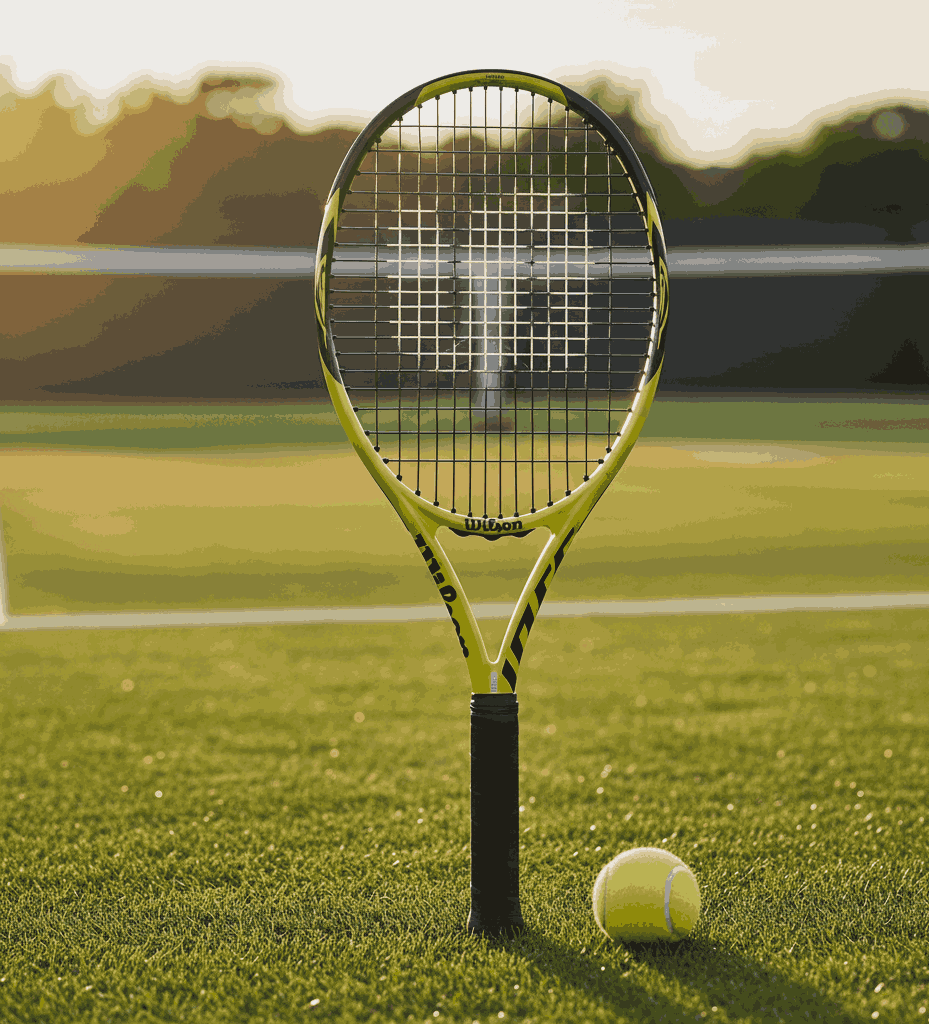
Specifications
Wilson’s racquets are built with a perfect blend of modern technology and high-quality materials like carbon fiber, graphite, and even plant-based composites for sustainability. Players can choose from lines tailored to specific needs. The Clash series delivers comfort and flexibility, making it especially popular among intermediate players and those seeking arm-friendly performance. The Blade racquets provide exceptional control and spin, appealing to advanced athletes who thrive on precision. For those who value effortless power, the Ultra series offers oversized heads, extended reach, and large sweet spots—perfect for doubles specialists and beginners. Meanwhile, the legendary Pro Staff line remains a staple among professionals for its unmatched feel and accuracy. Across all categories, Wilson incorporates innovations like SI3D frame technology for stability and vibration reduction, along with click-and-go bumper systems for convenience. From entry-level to pro-spec models, Wilson’s racquets balance durability, power, and finesse, ensuring reliable performance for every type of player.
Pros
- Wide variety of racquets designed for all skill levels and playing styles.
- Exceptional durability with advanced graphite and carbon fiber construction.
- Arm-friendly options like the Clash series reduce fatigue and prevent injuries.
Cons
- Premium models can be costly compared to competitors.
- Control-focused racquets (like the Blade or Pro Staff) may feel unforgiving for beginners.
2. Babolat – Spinning Dreams Into Reality
Babolat may have its roots in France, but its impact on American tennis has been nothing short of extraordinary. Founded in 1875, the company began with natural-gut strings before expanding into racquet manufacturing, eventually shaping the way modern players approach the game. After officially entering the U.S. market in 2000, Babolat quickly captured the attention of American athletes with its high-energy branding, innovation-driven designs, and endorsements from global stars like Rafael Nadal and Carlos Alcaraz. The brand’s identity resonates with today’s topspin-heavy, aggressive style of play, making its racquets a favorite for both recreational enthusiasts and competitive athletes across the country. Known for sleek, powerful, and technologically advanced frames, Babolat has earned a reputation as the choice for players who want their gear to match their energy and ambition. Whether it’s juniors learning the basics or pros competing at the highest level, Babolat has a racquet that delivers.
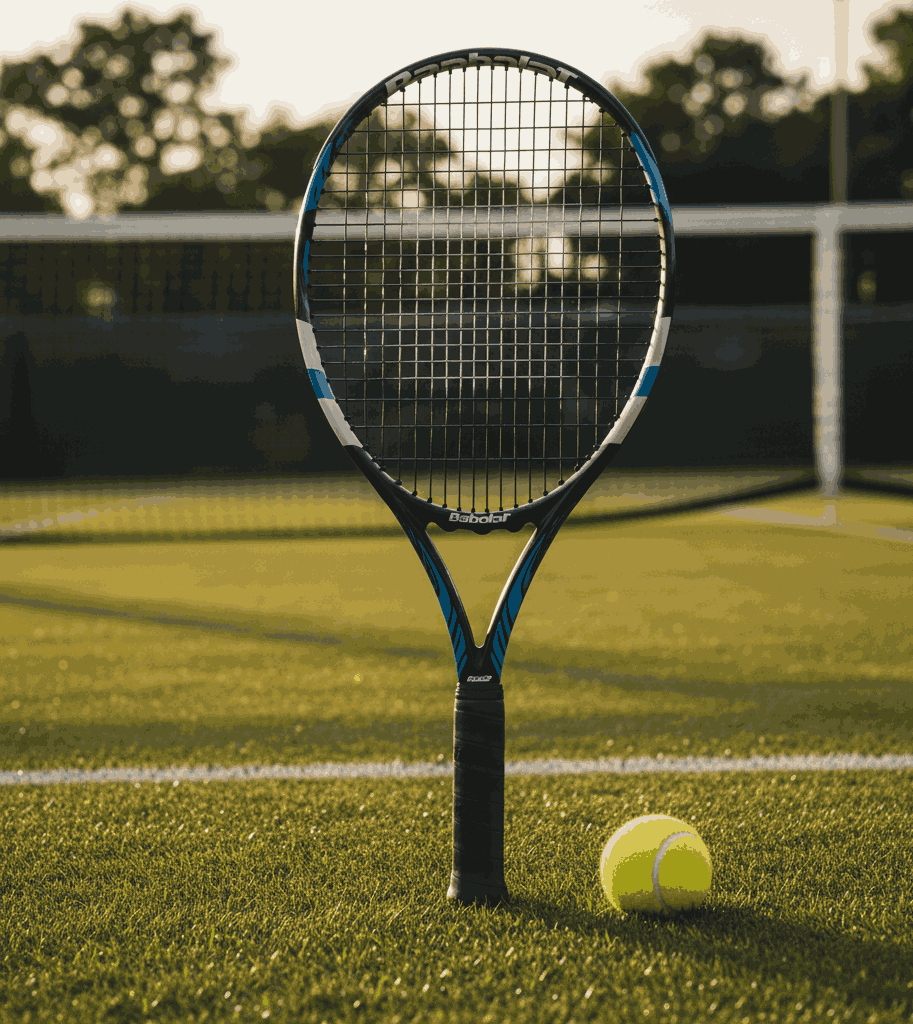
Specifications
Babolat racquets are designed for explosive, modern tennis, combining power, spin, and comfort in durable, high-performance frames. The Pure Drive remains the brand’s flagship for power, appealing to players who thrive on baseline dominance. Its stiff construction and frame geometry amplify ball speed while still offering forgiveness. For those who rely on topspin, the Pure Aero line—with its aerodynamic beam and open string pattern—creates heavy rotation that has become synonymous with Rafael Nadal’s game. Meanwhile, the Pure Strike focuses on control, providing advanced players with surgical precision for placement and strategy. Across these racquets, Babolat integrates technologies like FSI Spin for improved ball bite, Cortex Vibration Dampening for comfort, and Woofer systems for energy return and shock absorption. Newer models also feature Flax Fiber and NF² Tech, reducing harsh vibrations for an arm-friendly feel. Built with premium graphite composites and reinforced materials, Babolat ensures durability, consistent response, and professional-grade quality.
Pros
- Exceptional spin and power performance, especially in Pure Aero and Pure Drive lines.
- Advanced comfort technologies make them more arm-friendly than earlier generations.
- Durable construction and consistent build quality trusted by professionals.
Cons
- Power-focused models may sacrifice some control for precision-oriented players.
- Premium racquets are priced higher than many competitor options.
3. Head – Crafting Champions One Swing
Head has long been a pioneer in racquet technology, carving its legacy in American tennis since its founding in 1950 by Howard Head, an aeronautical engineer with a passion for innovation. From creating the first aluminum frame used by Arthur Ashe in the 1970s to introducing titanium and, more recently, Graphene-based frames, the company has consistently reshaped the industry. Today, Head holds a strong position among the top three racquet brands in the United States, favored by professionals, college athletes, and recreational players alike. Known for blending science with playability, the brand’s racquets appeal to a wide audience—from casual weekend players to icons like Novak Djokovic and Andy Murray. What sets Head apart is its versatility: whether you’re chasing power, spin, or precision, there’s a model tailored to your game. With decades of engineering breakthroughs and a global reputation, Head continues to deliver racquets that inspire confidence at every level.
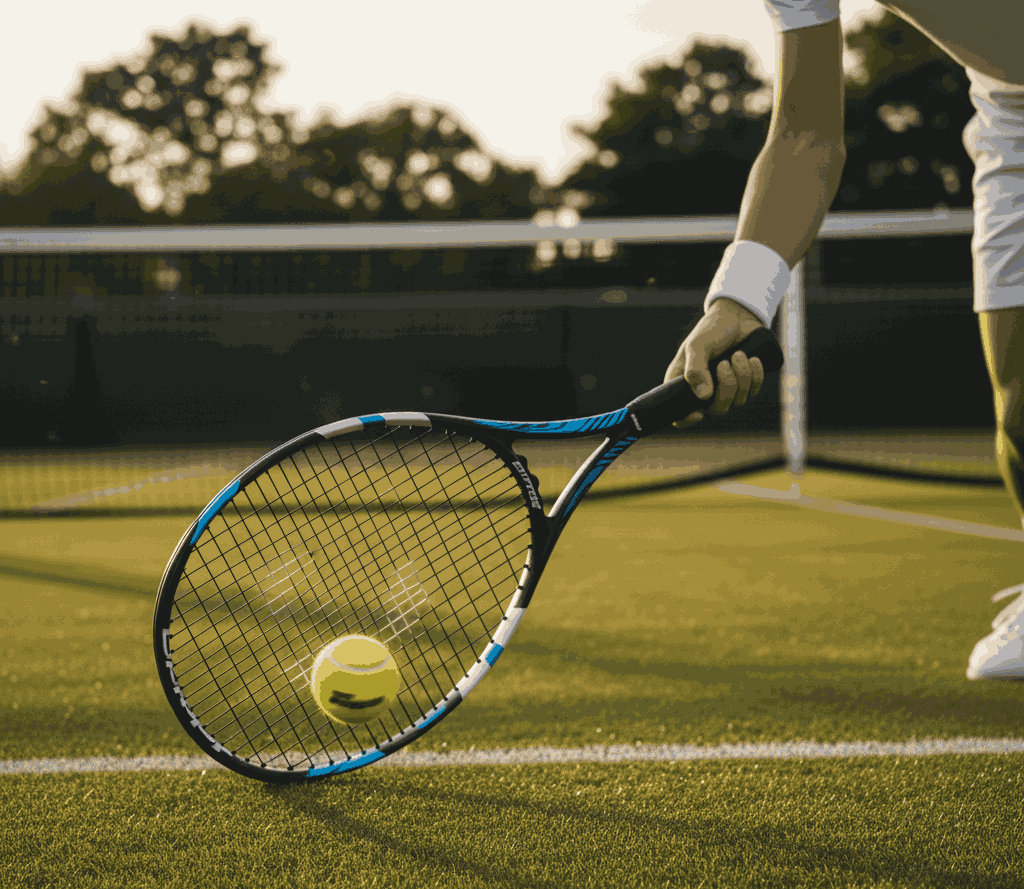
Specifications
Head racquets are designed to deliver a balanced combination of control, power, spin, and comfort, thanks to advanced engineering and thoughtful construction. The Speed series, endorsed by Novak Djokovic, offers an optimal mix of control and power, making it one of the most versatile options for all-court play. Players seeking precision and touch gravitate toward the Prestige and Gravity lines, which feature unique string patterns, thinner beams, and teardrop head shapes for larger sweet spots. Meanwhile, the Radical series offers all-around performance with a slightly more forgiving frame, while the Instinct and entry-level models like the MX Spark Elite cater to beginners with lighter weights and oversized heads. Across the board, technologies like Auxetic 2.0 provide instant responsiveness, while Graphene reinforcements increase stability without adding weight. With price points ranging from under $20 for starter racquets to $230 for pro-level frames, Head ensures quality options for every budget and skill level.
Pros
- Advanced technologies like Auxetic 2.0 and Graphene provide comfort, stability, and control.
- Wide range of racquets tailored to beginners, intermediates, and professionals.
- Strong pro endorsements increase trust and desirability among American players.
Cons
- Elite models (Prestige, Gravity Pro) may feel demanding for less experienced players.
- Higher-end racquets are priced above average compared to competitors.
4. Yonex – Precision Meets Courtside Mastery
Yonex may have started in Japan, but its reputation for craftsmanship and performance has won over a loyal American following. Founded in 1957, the brand entered the tennis scene in the early 1980s and quickly stood apart with its groundbreaking isometric head shape, designed to enlarge the sweet spot while preserving control. This innovation changed the game, attracting legends like Martina Navratilova and Billie Jean King early on, and continues to influence racquet design today. Over the past decade, Yonex has surged in the U.S. market, nearly tripling its share thanks to endorsements from stars like Naomi Osaka, Frances Tiafoe, and Casper Ruud. American players who value precision, comfort, and durability are increasingly turning to Yonex, appreciating its reputation for meticulous Japanese build quality. With racquets tailored for everyone—from beginners swinging their first frame to elite professionals—Yonex has carved out a respected place in the U.S. tennis landscape.
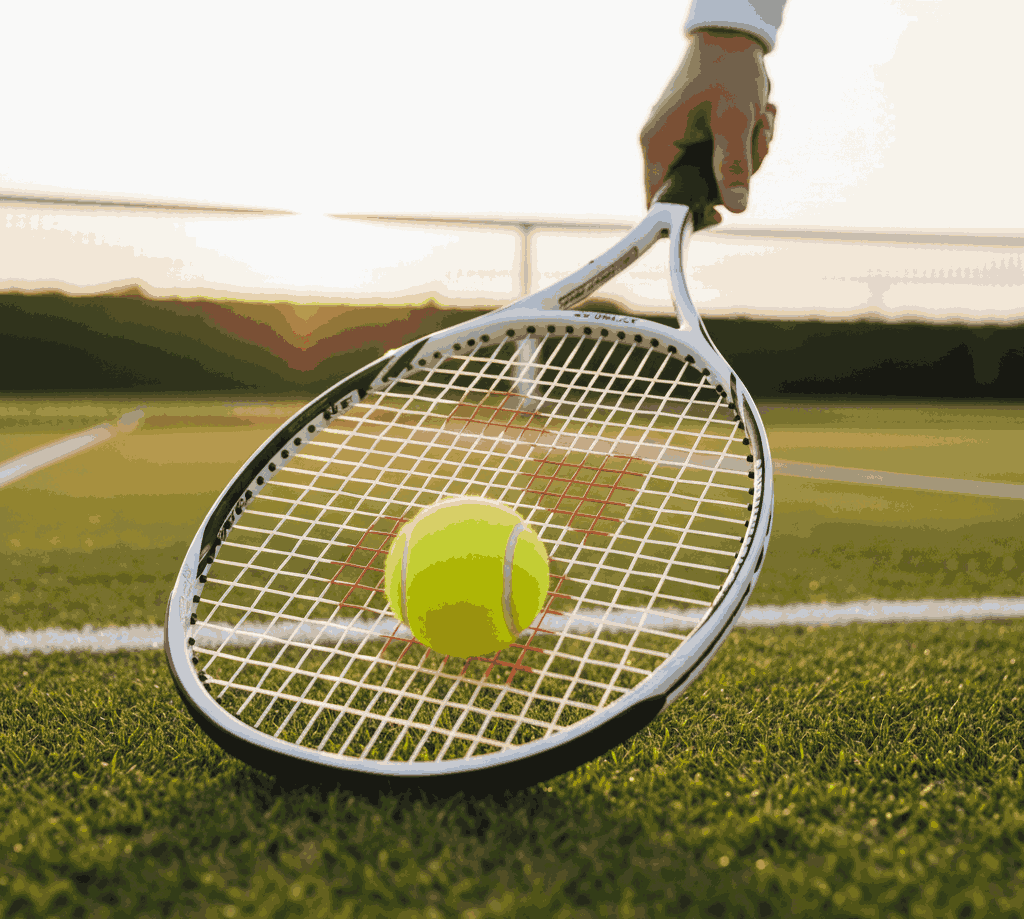
Specifications
Yonex racquets deliver a finely tuned mix of power, control, spin, and comfort, supported by advanced Japanese engineering. The Ezone series is the go-to for players seeking explosive power paired with comfort, featuring larger sweet spots and elastic graphite for smooth response. For spin-heavy baseliners, the VCORE line integrates aerodynamic frames and open string patterns that maximize rotation, making it a favorite among topspin specialists. On the other hand, the Percept series is engineered for precision, giving advanced players the touch and control they need for tactical play. Across all lines, Yonex incorporates Vibration Dampening Mesh (VDM) in the handle to reduce shock, along with 2G-Namd Flex Force graphite for improved snapback and feel. Even entry-level Astrel models are designed for easy handling and forgiveness, making them ideal for beginners. With U.S. prices ranging from $130 to $340, Yonex offers racquets that combine innovation, durability, and exceptional build consistency.
Pros
- Enlarged sweet spot and advanced tech provide precision, comfort, and control.
- Strong spin and power potential across Ezone and VCORE models.
- Premium Japanese build quality ensures long-lasting performance.
Cons
- Higher pricing makes pro-level frames less accessible for casual players.
- Isometric head shape may take adjustment for players used to traditional frames.
5. Volkl – Comfort That Shapes Your Play
Volkl’s story begins in 1923 in Straubing, Germany, where the brand first built its reputation in ski innovation before branching into tennis racquets in the 1970s. Unlike flashy mainstream names, Volkl carved its niche through precision German engineering and a focus on arm comfort. The release of models like the Zebra racquet turned heads, and over the decades, the company became known for its blend of innovation and player-friendly design. In the U.S., Volkl appeals strongly to tennis enthusiasts who prioritize injury prevention and long-lasting comfort without sacrificing performance. Its Dual Dampening Grip, V-Cell construction, and REVA handle system have made the brand a favorite among players struggling with tennis elbow or wrist pain. While it may not command the same spotlight as Wilson or Babolat, Volkl has quietly built a loyal American following—especially among older players, health-conscious athletes, and competitive all-court performers seeking stability and smooth play.
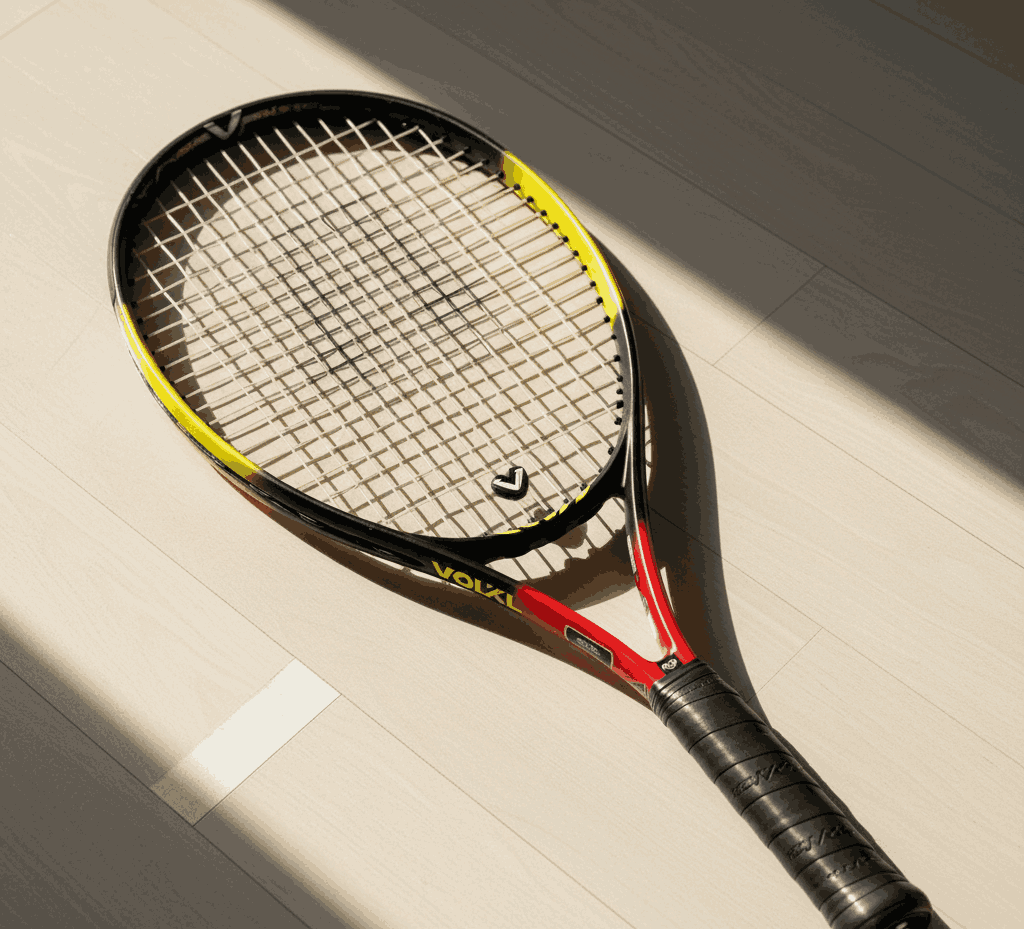
Specifications
Volkl racquets strike a careful balance of comfort, control, and spin, while still delivering solid power when needed. The V-Cell series (V-Cell 7, V-Cell 10, V-Cell V1 OS) integrates cellulose-based carbon fiber for shock absorption and stability, making it especially arm-friendly. The newer Vostra line (Vostra V8, V9) adds more liveliness and maneuverability, giving players quicker response and improved spin. Advanced features like the Super Grommet System expand sweet spots and allow freer string movement, boosting both comfort and depth of shot. For precision and feel, models like the C10 Pro remain timeless favorites among advanced competitors. Typical American buyers can find Volkl racquets ranging from about $120 for beginner-friendly frames to $229 for pro-level models, with durability standing out as a major strength. Built with German craftsmanship, aerodynamic head-light balance, and high torsional stability, Volkl frames deliver a unique combination of ease, protection, and long-term reliability.
Pros
- Exceptional comfort and vibration dampening, ideal for players with elbow or wrist issues.
- Durable German engineering ensures racquets maintain performance over time.
- Balanced blend of control, spin, and stability for all-court play.
Cons
- Less raw power compared to explosive brands like Babolat.
- Smaller U.S. market presence makes it less visible and trendy.
6. Solinco – Power Unleashed With Every Stroke
Solinco may be a young name in the racquet world, but its story is a uniquely American one. Headquartered in Los Angeles, the company first made waves with high-performance tennis strings, gaining a devoted following among professionals and serious amateurs. In 2022, Solinco officially entered the racquet market, quickly proving that it wasn’t just dabbling—it was competing with the biggest names. By 2025, its Whiteout and Blackout racquet lines had become bestsellers on U.S. platforms like Amazon, drawing praise for their modern design and high-level playability. Solinco racquets have struck a chord with players who crave explosive power without sacrificing comfort, along with spin-friendly performance that suits today’s aggressive baseline game. Though new to the racquet scene, Solinco has leveraged its reputation for string innovation to carve out a space as a bold, edgy alternative. It’s a brand built for players who want cutting-edge technology wrapped in a sleek, professional package.
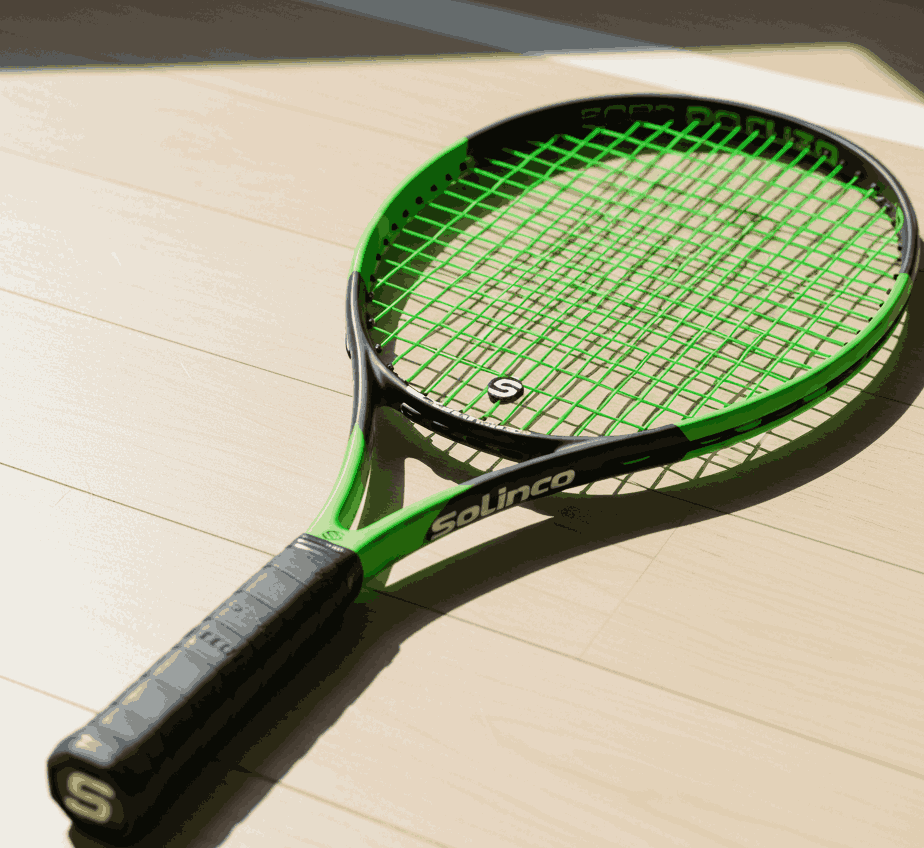
Specifications
Solinco racquets stand out for their forward-thinking engineering. The Whiteout series emphasizes control and feel, designed with foam-filled hoops and vibration-dampening technology that soften impact and protect the arm. Meanwhile, the Blackout line delivers a stiff frame design with around a 71 RA stiffness rating, paired with a 100-square-inch head size that produces impressive power and depth. Both series incorporate a 16×19 string pattern, amplifying spin potential by allowing more ball bite. Advanced construction techniques, such as Arch-2 carbon fiber layups and the use of high-modulus 40T carbon fiber combined with liquid crystal fibers, give Solinco racquets exceptional stability and responsiveness even on off-center hits. U.S. pricing ranges between $180 and $300, with flagship models toward the higher end, positioning them as premium but competitive options. This balance of innovative materials, spin-friendly design, and surprising comfort has made Solinco one of the most intriguing new players in the racquet market.
Pros
- Exceptional spin potential combined with strong stability and power.
- Advanced materials provide comfort despite stiff frame designs.
- Appeals to a wide range of players, from ambitious intermediates to professionals.
Cons
- Limited racquet variety compared to more established brands.
- Premium pricing may discourage casual or budget-conscious players.
7. Tecnifibre – Control Born From Expertise
Founded in France in 1979 by Thierry Maissant, Tecnifibre began its journey not with racquets but with strings. The brand pioneered polyurethane string technology and stringing machines, earning trust among serious players before expanding into racquet design. Over the decades, Tecnifibre has built a reputation for innovation, precision, and craftsmanship, carving out its space as a specialist in control-oriented racquets. Its growth in the U.S. market has been fueled by endorsements from tour champions like Daniil Medvedev and Iga Swiatek, who showcase Tecnifibre’s ability to deliver performance at the highest level. Tecnifibre racquets are celebrated for their remarkable blend of control, responsiveness, and comfort, giving players both precision and arm protection during long rallies. While it doesn’t have the mass-market clout of Wilson or Babolat, Tecnifibre thrives as a brand for those who value finely tuned gear with a European engineering touch, offering a refined, consistent playing experience.
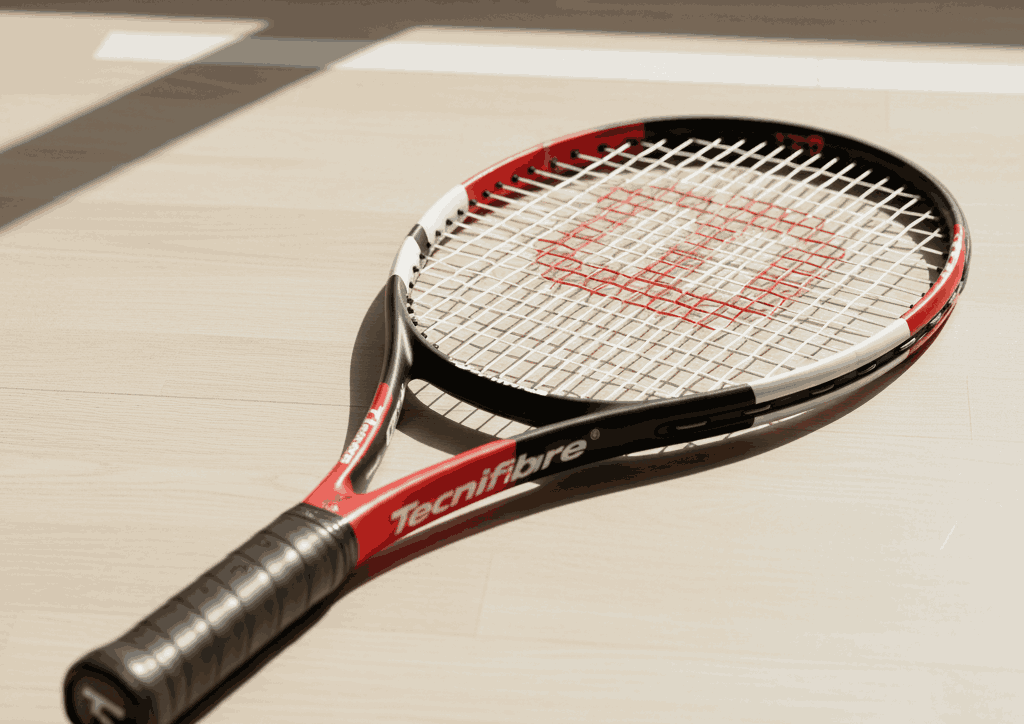
Specifications
Tecnifibre’s racquet lineup balances advanced technology with player-focused design. The T-Fight series, especially the T-Fight 305 RS and 300 RS, is engineered for advanced players who demand control and balanced power. The TF40 line emphasizes stability and precision, with dense string patterns (18×19 or 16×20) that provide surgical shot placement for heavy hitters. For players seeking comfort and easier playability, the TF-X1 and Tempo racquets integrate Isoflex and foam-filled frames, minimizing vibration while enlarging the sweet spot. Tecnifibre incorporates Dynacore HD and XTC resin blends, creating flexible, responsive frames without compromising power, while the 5-sided R-Shaped Beam in the T-Fight enhances torsional stability. U.S. pricing ranges between $150 and $300, positioning Tecnifibre alongside premium brands. Durability is another strength, as high-quality graphite composites and advanced resin blends ensure consistent feel over time. Together, these elements make Tecnifibre an attractive choice for players who prioritize control, responsiveness, and all-day comfort.
Pros
- Outstanding control and precision, ideal for placement-focused players.
- Foam-filled comfort and Isoflex tech provide excellent arm protection.
- Wide lineup accommodating both ambitious intermediates and touring pros.
Cons
- Lower U.S. brand recognition compared to Wilson or Babolat.
- Premium pricing on flagship models may deter casual players.
8. Dunlop – Reliability That Inspires Confidence
Dunlop’s story is deeply tied to tennis history. Founded in 1910 as a British rubber company, the brand ventured into tennis in the 1920s and quickly established itself as a household name. Its iconic Maxply Fort racquet, famously wielded by Rod Laver, cemented Dunlop’s prestige in the golden era of wooden racquets. By the 1980s, the company was at the forefront of graphite racquet innovation, reinforcing its reputation for performance and craftsmanship. Today, under Dunlop Sports with U.S. headquarters in South Carolina, the brand is enjoying a strong resurgence in the American market. Known for dependable playability and player-friendly pricing, Dunlop caters to everyone—from juniors swinging their first Nitro racquet to seasoned competitors commanding the CX 200 Tour. With a balance of tradition and innovation, Dunlop blends spin, power, and comfort in ways that appeal to American club players, recreational athletes, and aspiring professionals alike.
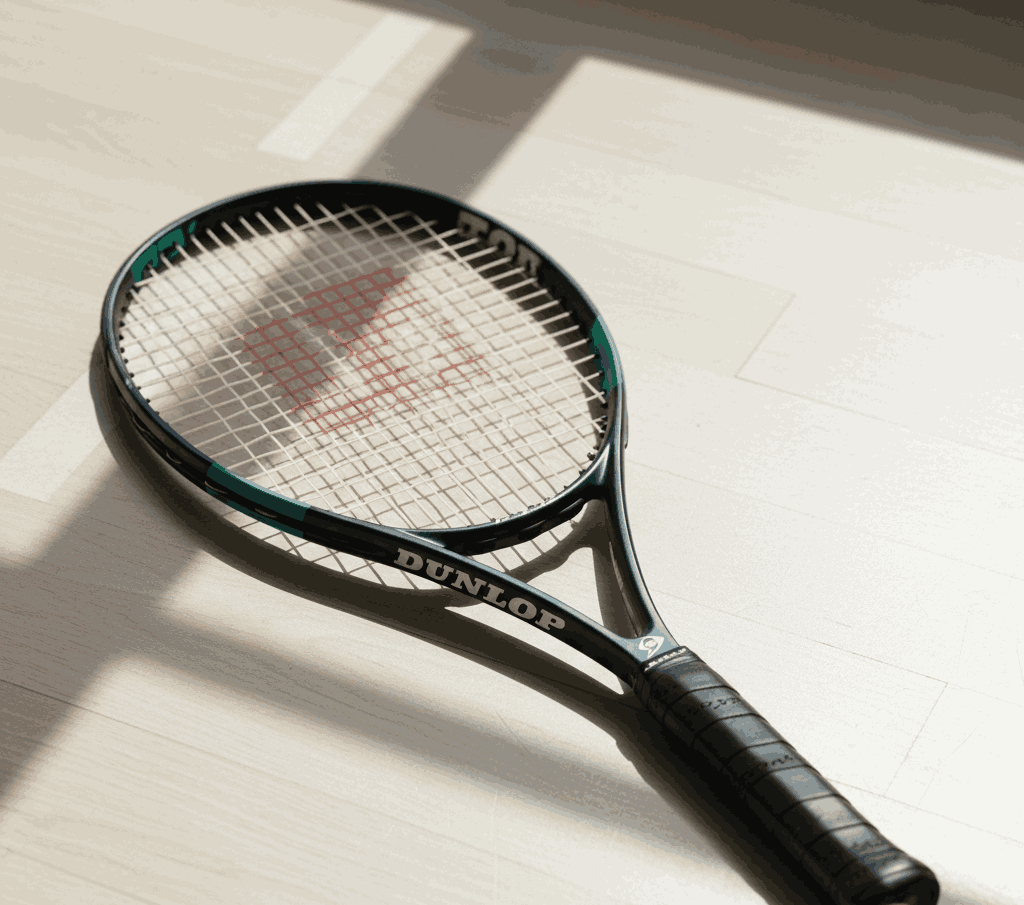
Specifications
Dunlop racquets are designed for consistency, versatility, and value across different skill levels. The SX 300 series, including the Tour, LS, and Lite models, is built for spin-hungry players, with Spin Boost grommets enhancing string movement for topspin and slice control. The CX 200 Tour offers precision and control with its denser string pattern, ideal for advanced players who prioritize accuracy. Meanwhile, the FX 500 series blends power and comfort, supported by Dual-Bridge frame construction and Shock Shield technology for reduced vibrations. For beginners, the Nitro line delivers oversized, lightweight frames that are easy to swing and forgiving. Dunlop racquets typically feature high-modulus graphite composites with integrated dampening layers for durability and arm protection. U.S. pricing ranges from $60 for entry-level models to around $230 for flagship racquets, ensuring accessibility without compromising quality. Overall, Dunlop’s racquet lineup appeals to players who want dependable technology at an affordable price point.
Pros
- Consistent, reliable performance balancing control, spin, and power.
- Arm-friendly comfort technologies protect against fatigue and injury.
- Competitive pricing offers strong value for beginners and intermediates.
Cons
- Limited pro-tour visibility compared to Wilson, Babolat, or Head.
- Advanced models may lack the hyper-precision or customization elite players seek.
9. Prince – Forging Powerful Forgiving Swings
Prince, an iconic American tennis brand founded in 1970 in Princeton, New Jersey, has long been recognized as a pioneer in the sport. The company made history with the introduction of the oversized tennis racquet in the late 1970s, forever changing the game by giving players a larger sweet spot and easier access to power. Throughout the 1980s, Prince commanded nearly a third of the U.S. market, thanks to its bold use of aluminum, graphite, and innovative frame designs that appealed to players of all levels. While it may not dominate global rankings today like Wilson or Babolat, Prince still holds a loyal following in the United States, particularly among recreational and club players who appreciate a racquet that balances power, control, and comfort. With lines like the Phantom, Ripstick, Warrior, and O3 Legacy, Prince continues to deliver modern performance rooted in its legendary tradition of innovation.
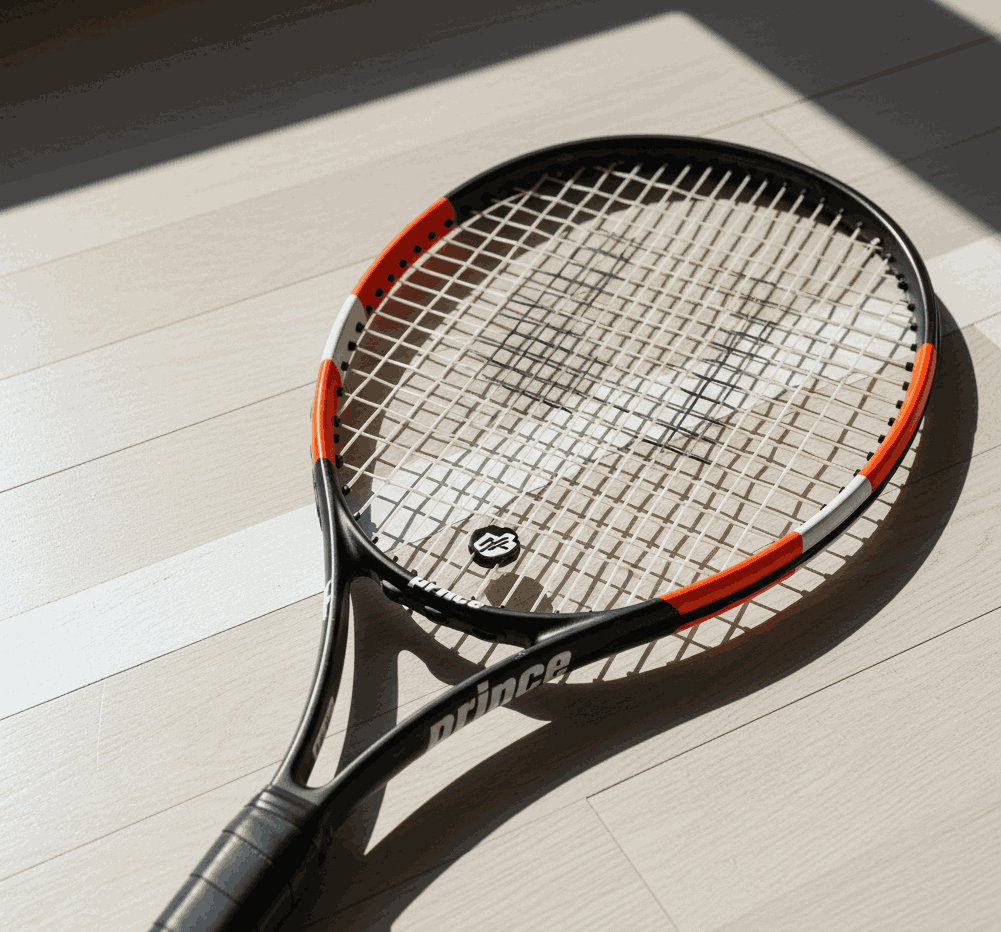
Specifications
Prince racquets are engineered with versatility in mind, making them suitable for a broad spectrum of players. Beginners often gravitate toward oversized options like the O3 Legacy 120 or Warrior 100, which deliver forgiveness, easy handling, and ample power. Intermediate players enjoy the Ripstick 100 and Warrior 100 for their combination of spin, comfort, and reliable control. Advanced competitors lean toward the Phantom 100X, Textreme Warrior, or Ripstick 98, which offer precision, feel, and the stability needed for higher-level play. Across all models, Prince integrates high-quality graphite composites and its Textreme material with Twaron fibers, ensuring torsional stability and durability. Unique features such as O-Port technology improve string movement, creating a plush feel while reducing vibration and arm fatigue. Price points range from about $99 for entry-level racquets to around $229 for professional-grade options, making Prince a brand that blends affordability with advanced technology across all playing tiers.
Pros
- Strong heritage of innovation and oversized racquet technology.
- Excellent mix of power, control, and comfort across multiple racquet lines.
- Arm-friendly features like O-Port technology reduce fatigue and enhance playability.
Cons
- Fewer pro endorsements limit visibility compared to top competitors.
- Unique O-Port design may take time for players to adjust to.
10. Senton – Beginners Journey Starts Here
Senton is an emerging American tennis brand that has begun carving out a niche in the beginner and junior markets. While it doesn’t carry the legacy or global recognition of brands like Wilson or Babolat, Senton focuses on creating affordable, easy-to-use racquets that help newcomers learn and enjoy the game. Its lightweight designs and manageable frame sizes make it especially appealing for juniors, recreational players, and adults just starting out. The brand emphasizes comfort, basic control, and accessible playability over high-end performance, allowing players to build technique without being hindered by heavy or overly complex equipment. Despite limited marketing and a smaller presence in the competitive scene, Senton racquets have earned attention in the U.S. for their practicality and cost-effectiveness, often appearing in online marketplaces and sports retailers as entry-level options for casual, family, and youth tennis enthusiasts.
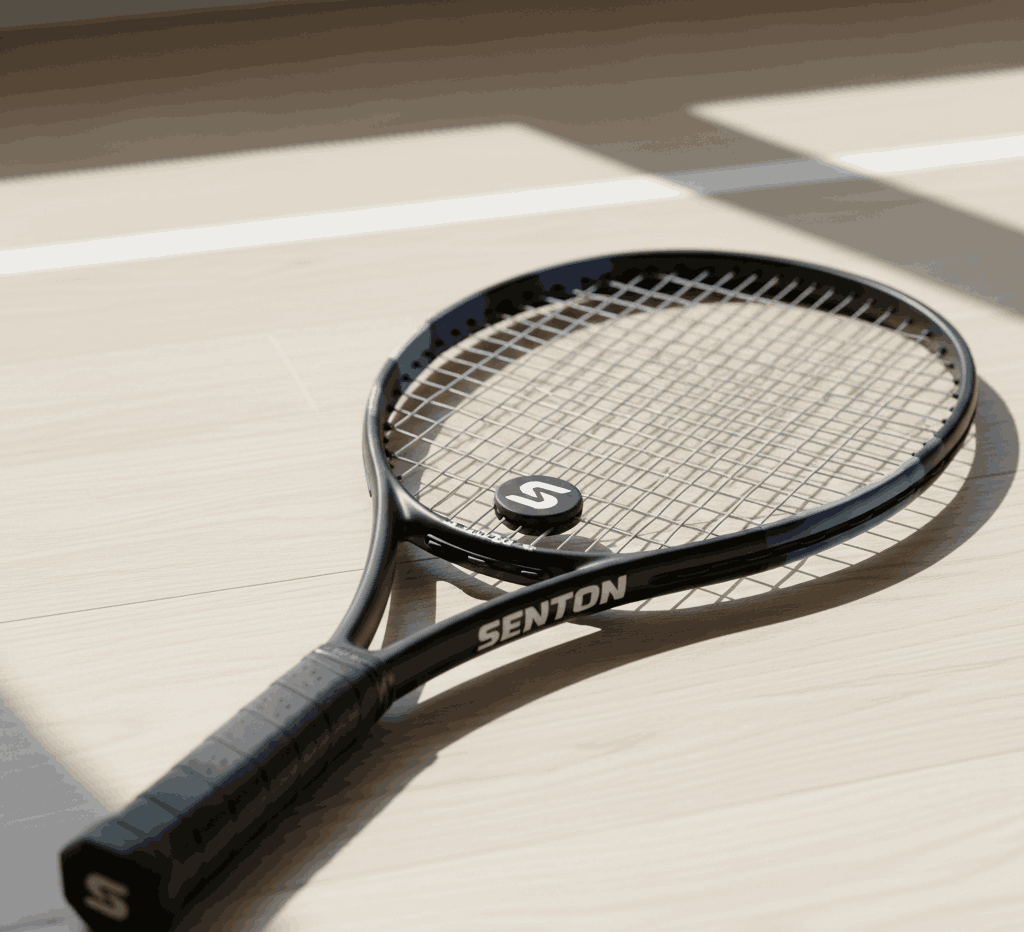
Specifications
Senton racquets are designed with beginners and recreational players in mind. Lightweight 27-inch frames and junior-sized options ensure easy handling and maneuverability. Oversized heads improve forgiveness, helping players make cleaner contact even on off-center shots. Construction typically combines carbon fiber and aluminum composites, providing sufficient durability for casual play while keeping costs low. Power levels are moderate, suitable for learning strokes and controlling rally pace. Spin capability is basic, relying mostly on technique and string tension rather than advanced frame or string technology. Comfort is prioritized through vibration-dampening features and balanced weight distribution, reducing fatigue during extended practice sessions. Price points are extremely accessible, generally ranging from $50 to $100 in the U.S., making Senton a practical choice for families, youth programs, and recreational players seeking quality beginner equipment. While it lacks high-end innovation, the racquets offer functional performance for entry-level tennis development.
Pros
- Affordable and accessible for beginners and juniors.
- Lightweight and easy-to-handle frames support learning and skill development.
- Basic comfort and forgiving design reduce arm fatigue.
Cons
- Limited brand recognition and market presence.
- Lacks performance-enhancing technologies found in advanced racquets.
Market Comparison of Top 10 Brands of Tennies Racquet in USA
| Brand | Key Features | Price Range | Speciality |
|---|---|---|---|
| Wilson | Durable, versatile, arm-friendly | $100 – $250 Buy Now | Trusted by pros |
| Babolat | Powerful, spin-oriented, comfortable | $130 – $300 Buy Now | Aggressive baseline play |
| Head | Balanced, stable, responsive | $20 – $230 Buy Now | All-court versatility |
| Yonex | Enlarged sweet spot, precise | $130 – $340 Buy Now | Comfort and consistent performance |
| Prince | Oversized, forgiving, arm-friendly | $99 – $229 Buy Now | Ideal for intermediate players |
| Volkl | Comfortable, stable, vibration-dampening | $120 – $229 Buy Now | German precision engineering |
| Solinco | Spin-friendly, powerful, stable | $180 – $300 Buy Now | Modern competitive performance |
| Tecnifibre | Precise, controlled, comfortable | $150 – $300 Buy Now | European precision engineering |
| Dunlop | Reliable, versatile, affordable | $60 – $230 Buy Now | Beginner-friendly, dependable |
| Senton | Lightweight, forgiving, simple | $50 – $100 Buy Now | Beginner and junior focus |
Where to Purchase
- Amazon: Wide variety, competitive pricing, and convenient bundled stringing services.
- Walmart: Affordable starter kits, easy returns, and nationwide accessibility.
- Dick’s Sporting Goods: Demo programs, premium racquets, and expert restringing services.